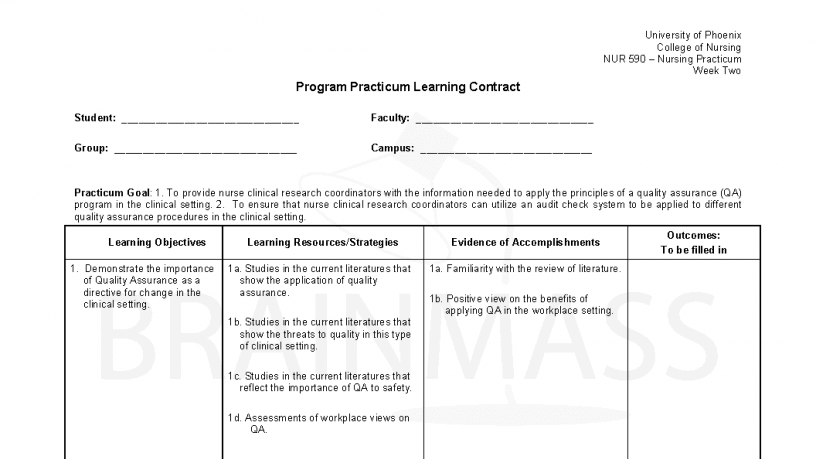Contract Grading is a form of grading which results from an instructor to student cooperation, and entails contracted number of assignments of specified quality that correspond to specific letter grades. Contract grading may be contrasted with other grading methods, such as grading on a curve or percentile systems.
Basis of Contract Grading
In traditional grading, educators determine assignments, exams, and projects before the course begins. Students are expected to follow the syllabus and complete the tasks presented. The grade the student receives is a reflection of how well he or she completed the pre-determined syllabus. In this system, students are expected to follow a path that reflects the syllabus.
However, the contract grading system allows each student to make his or her own path for the class, which allows students to pick and choose which assignments or projects they want to complete. Grades are assigned on the basis of the agreement between the student and the professor. With contract grading, students have a say in their curriculum, as well as how their grade is ultimately assessed. For some students this grading system requires a more active role.
Although the student decides what is to be accomplished throughout the course, similar to a contract, both the student and professor must come to an agreement. After students turn in their initial contract or proposal, the teacher may make revisions or require some changes be made before a final agreement is made. Similar to a contract, a contract grade must also be signed by both parties, confirming the agreement for a particular grade. However, the contract grading system is not as binding as a business contract. Should the student change his or her mind mid-semester, he or she may re-submit the contract provided the professor approves the changes.
Learning Contract Video
Example of Contract Grade Application
Dr. Scott Alberts, professor at Truman State University, has implemented contract grading in a few of the courses he teaches, including his Junior Interdisciplinary Seminar class and Introductory Interdisciplinary class. While students have the freedom to choose which assignments they will complete, Dr. Alberts does implement some constraints. The contract used in his course consists of both required components, as well as optional components. The required number of additional "optional" assignments for each letter grade is also clearly established.
For example, students must earn at least 10 +'s on required and optional assignments in order to receive an A in the class. Therefore, students are able to decide what letter grade they wish to receive in the course and accordingly complete the additional, optional assignments that may warrant a certain number of +'s leading them toward their desired grade. That quality is also an intrinsic part of Dr. Alberts' contract system because quantity alone cannot achieve the grade. Students, in addition to choosing the grade they desire and how many assignments they will complete, must also commit themselves to the completion of their contract. Once the student determines the amount of works he or she chooses to complete, contracts are then signed and agreed upon. There is a grace period for changing of contracts, but it is ultimately up to the professor to accept or to reject any proposals. The student then has the responsibility to complete and turn in the contracted assignments, with a few deadlines to meet.
Student Reaction to Contract Grading
A study published in 1990 received opinions about the contract grading system from 51 undergraduate education majors and 28 graduate students majoring in education at Acadia University in Nova Scotia, Canada. Students at both education levels reacted to the contract grading system in a positive manner. They agreed that the grading system and assignments were made clear from the beginning, that the system was appropriate, and that grades were assigned fairly. When asked to rank the effectiveness and importance of the various aspects of contract grading, students reported that the key elements were the control they felt they had by being able to determine their grades, the clearly stated expectations for performance in the course, criterion referencing of assignments, and the mastery approach to learning.
Advantages
Contract grading can enable the student to progress at his or her own pace. In addition to placing time management more fully in the hands of the student, contract grading can also emphasize learning and reduce grade competition. Systems of this style also encourage a cooperative learning process. By requiring instructor and student to work jointly, emphasis is added on the desires of the student and the goals he or she wishes to accomplish. According to Bucknell University, contract grading "facilitates the development of a partnership learning environment in which students are likely to retain more information, make better use of information, and be more highly motivated to learn than in teacher-directed learning environments." Due to the freedom allowed by the system, time management skills are acquired and exercised.
Disadvantages
Contract grading could be viewed as threatening to students who have relied upon structured grading processes. Increased responsibility may cause anxiety for students expecting more common approaches. In addition to concerns for the individual student, contract grading is largely dependent upon implementation by the instructor. An instructor may, through this grading system, cause students to take on greater responsibility for learning and success while simultaneously restricting freedom. Contract grading systems are susceptible to paternalism on the part of the instructor. Whereas the students take on the responsibility of choosing assignments, they may not also actively determine expectations.
Are You Looking for Products
Here some products related to "Contract Grading".
Bridge at a Glance: Audre..
Sam Walton: Made In Ameri..
Himalaya Organic Bacopa/B..
Best Consignment Shop Sof..
Get these at Amazon.com* amzn.to is official short URL for Amazon.com, provided by Bitly
Source of the article : here



EmoticonEmoticon